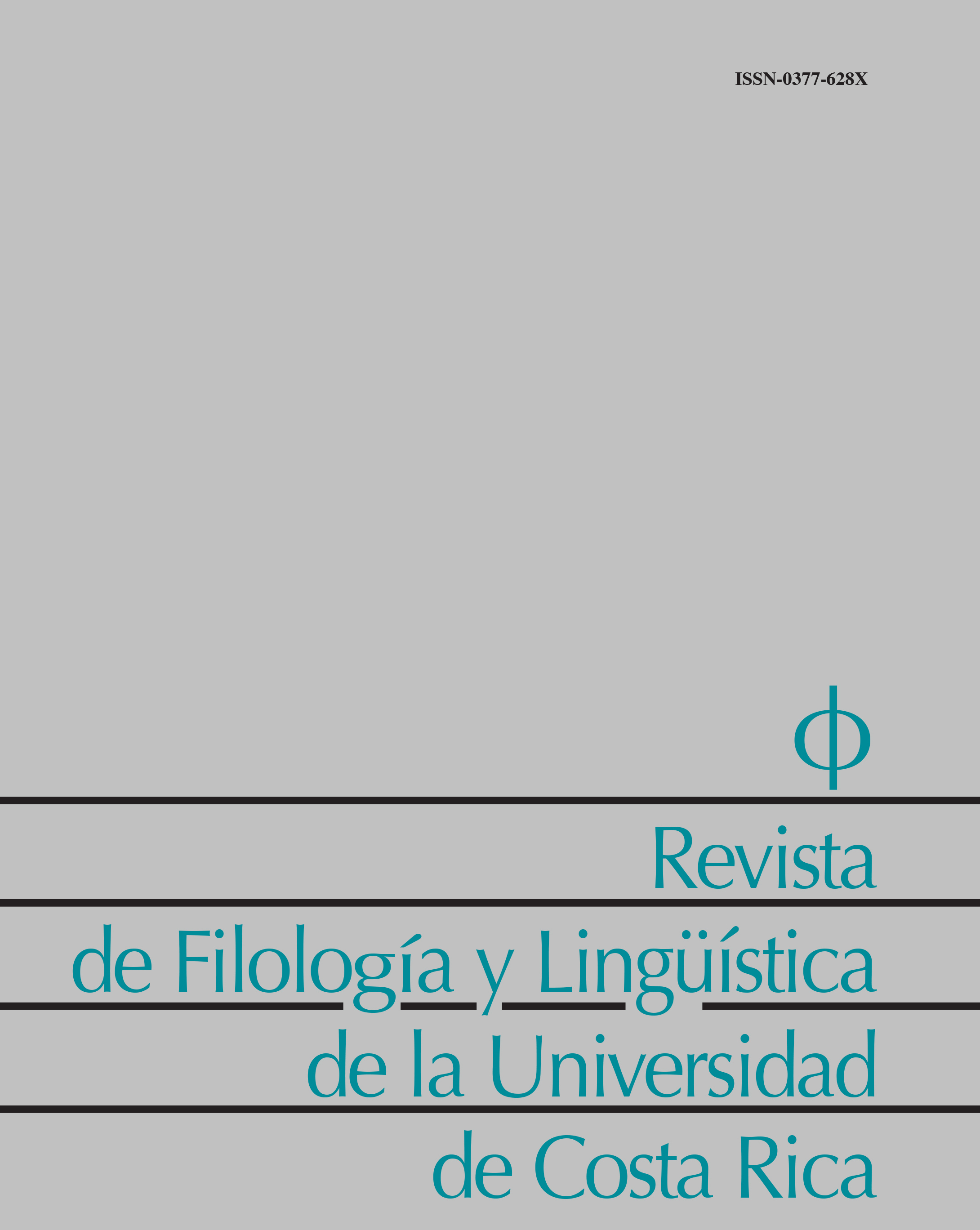Abstract
Este artículo presenta un estudio sobre la enseñanza de expresiones idiomáticas, modismos o frases hechas como ser un cero a la izquierda en un curso de español como lengua extranjera de nivel intermedio. Tomando como punto de partida recomendaciones de incorporar las expresiones idiomáticas en la enseñanza de clases de segunda lengua (ej. Irujo, 1986b; Liontas, 2003; Tran, 2012), el estudio investiga un acercamiento pedagógico que hasta ahora no ha recibido mucha atención: el uso de los modismos como recurso mnemónico en el aprendizaje de aspectos gramaticales de la lengua. Se aprovecharon los materiales didácticos de Zyzik (2010) y Zyzik y Marqués-Pascual (en prensa) para comparar dos métodos diferentes de la enseñanza explícita de la distinción semántica entre ser y estar: uno con actividades de reconocimiento y producción y otro mediante la enseñanza de expresiones idiomáticas. Los resultados indicaron que la enseñanza de modismos no es necesariamente mejor que otros métodos de enseñanza, pero sí es una opción viable para la práctica de la gramática a la vez que fomenta el aprendizaje del lenguaje idiomático.
Literaturhinweise
Boers, F. (2000). Metaphor awareness and vocabulary retention. Applied Linguistics. 21 (4), 553-571.
Boers, F., Eyckmans, J. y Stengers, H. (2007). Presenting figurative idioms with a touch of etymology: More than mere mnemonics? Language Teaching Research. 11 (1), 43-62.
Boers, F., Lindstromberg, S., y Webb, S. (2014). Further evidence of the comparative memorability of alliterative expressions in second language learning. RELC Journal. 45 (1), 85-99.
Cooper, T. C. (1998). Teaching Idioms. Foreign Language Annals. 31, 255-266.
Cooper, T. C. (1999). Processing of idioms by L2 learners of english. TESOL Quarterly. 33 (2), 233-262.
Cornell, A. (1999). Idioms: An approach to identifying major pitfalls for learners. IRAL. 37 (1), 1-22.
Ellis, N. C., Simpson-Vlach, R., y Maynard, C. (2008). Formulaic language in native and second language speakers: Psycholinguistics, corpus linguistics, and TESOL. TESOL Quarterly. 42 (3), 375-396.
Ellis, R. (2005). Principles of Instructed Language Learning. System. 33, 209-234.
Geeslin, K. (2000). A New Approach to the Second Language Acquisition of Copula Choice in Spanish. Por R. Leow y C. Sanz. (Eds.). Spanish Applied Linguistics at the Turn of the Millennium: Papers from the 1999 Conference on the L1 & L2 Acquisition of Spanish and Portuguese. (50–66). Somerville, MA: Cascadilla Press.
Geeslin, K. L. (2014). The Acquisition of the Copula Contrast in Second Language Spanish. Por K. L. Geeslin (Ed.). The Handbook of Spanish Second Language Acquisition. (219-234). West Sussex, UK: Wiley-Blackwell.
Guntermann, G. (1992). An Analysis of Interlanguage Development over Time: Part II, Ser and Estar. Hispania. 75, 1294-1303.
Irujo, S. (1986a). Don’t put your leg in your mouth: Transfer in the acquisition of idioms in a second language. TESOL Quarterly. 20 (2), 287-304.
Irujo, S. (1986b). A piece of cake: Learning and teaching idioms. English Language Teaching Journal. 40 (3), 236-242.
Lindstromberg, S. y Boers, F. (2008). The mnemonic effect of noticing alliteration in lexical chunks. Applied Linguistics. 29 (2), 200-222.
Liontas, J. I. (1999). Developing a pragmatic methodology of idiomaticity: The comprehension and interpretation of SL vivid phrasal idioms during reading. (Tesis doctoral). University of Arizona. http://arizona.openrepository.com/arizona/handle/10150/284736
[Consulta 28 de abril de 2015].
Liontas, J. I. (2003). Killing two birds with one stone: Understanding spanish VP idioms in and out of context. Hispania. 86 (2), 289-301.
Marqués-Pascual, L. y Zyzik, E. (2012). Implicit and explicit instruction and the acquisitions of ser and estar. Ponencia presentada en American Council of Teachers of Foreign Languages, Annual Convention. Philadelphia (PA), EE.UU.
Ryan, J., y Lafford, B. (1992). Acquisition of Lexical Meaning in a Study Abroad Environment: Ser and Estar and the Granada Experience. Hispania. 75, 714-722.
Sugano, M. Z. (1981). The idiom in spanish language teaching. The Modern Language Journal. 65 (1), 59-66.
Tran, H. Q. (2012). An explorative study of idiom teaching for pre-service teachers of english. English Language Teaching. 5 (12), 76-86.
VanPatten, B. (1985). The Acquisition of Ser and Estar in Adult Second Language Learners: A Preliminary Investigation of Transitional Stages of Competence. Hispania. 68, 399-406.
VanPatten, B. (1987). Classroom Learners’ Acquisition of Ser and Estar: Accounting for Developmental Patterns. Por B. VanPatten, T. Dvorak y J. Lee (Eds.). Foreign Language Learning: A Research Perspective. (61-75). Rowley, MA: Newbury House.
VanPatten, B. (2010). Some Verbs Are More Perfect than Others: Why Learners Have Difficulty with Ser and Estar and What It Means for Instruction. Hispania: A Journal Devoted to the Teaching of Spanish and Portuguese. 93 (1), 29-38.
Wray, A. (2000). Formulaic sequences in second language teaching: Principle and practice. Applied Linguistics. 21 (4), 463-489.
Zyzik, E. (2010). Sin pelos en la lengua: La adquisición de modismos en una clase de español como lengua extranjera. Hispania. 93 (3), 453-470.
Zyzik, E. (2011). Second language idiom learning: The effects of lexical knowledge and pedagogical sequencing. Language Teaching Research. 15 (4), 413-433.
Zyzik, E., y Marqués-Pascual, L. (2012). Spanish differential object marking: An empirical study of implicit and explicit instruction. Studies in Hispanic and Lusophone Linguistics. 5, 387-421.
Zyzik, E. y Marqués-Pascual, L. (en prensa). Practice with formulaic sequences: Can it promote the incidental learning of grammar? Por C. Jones (Ed.). Practice in Second Language Learning. Cambridge: Cambridge University Press.

